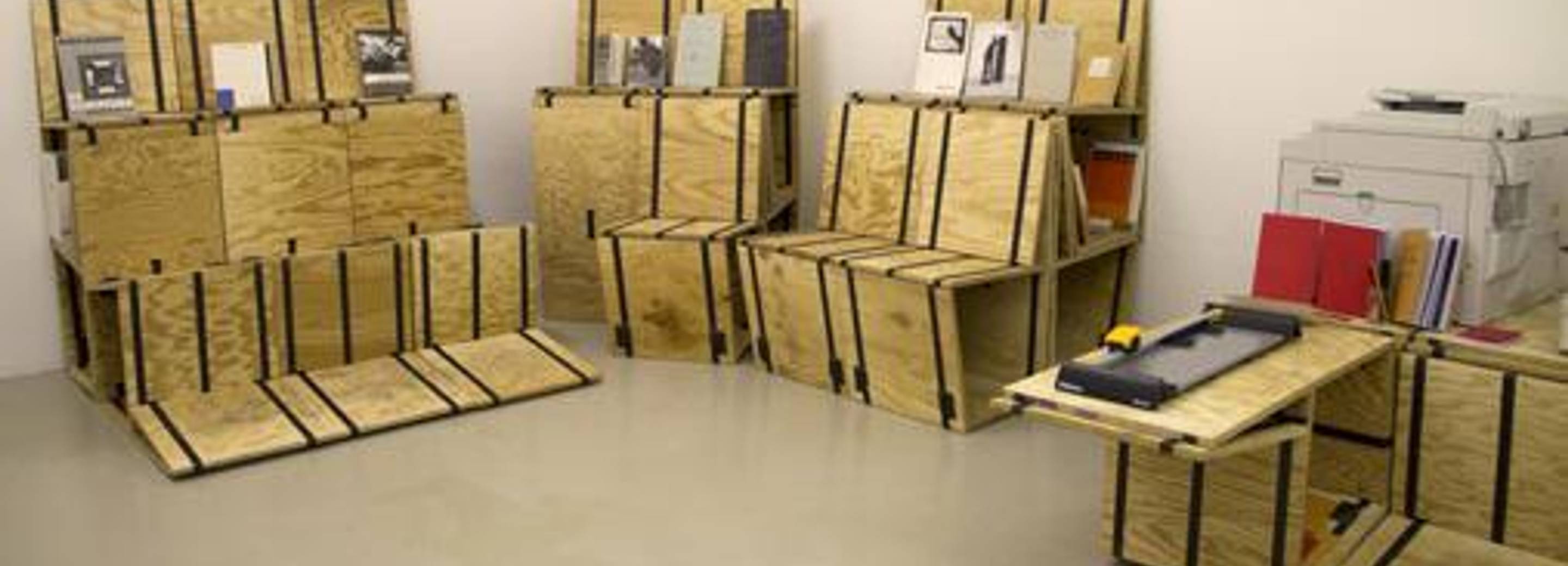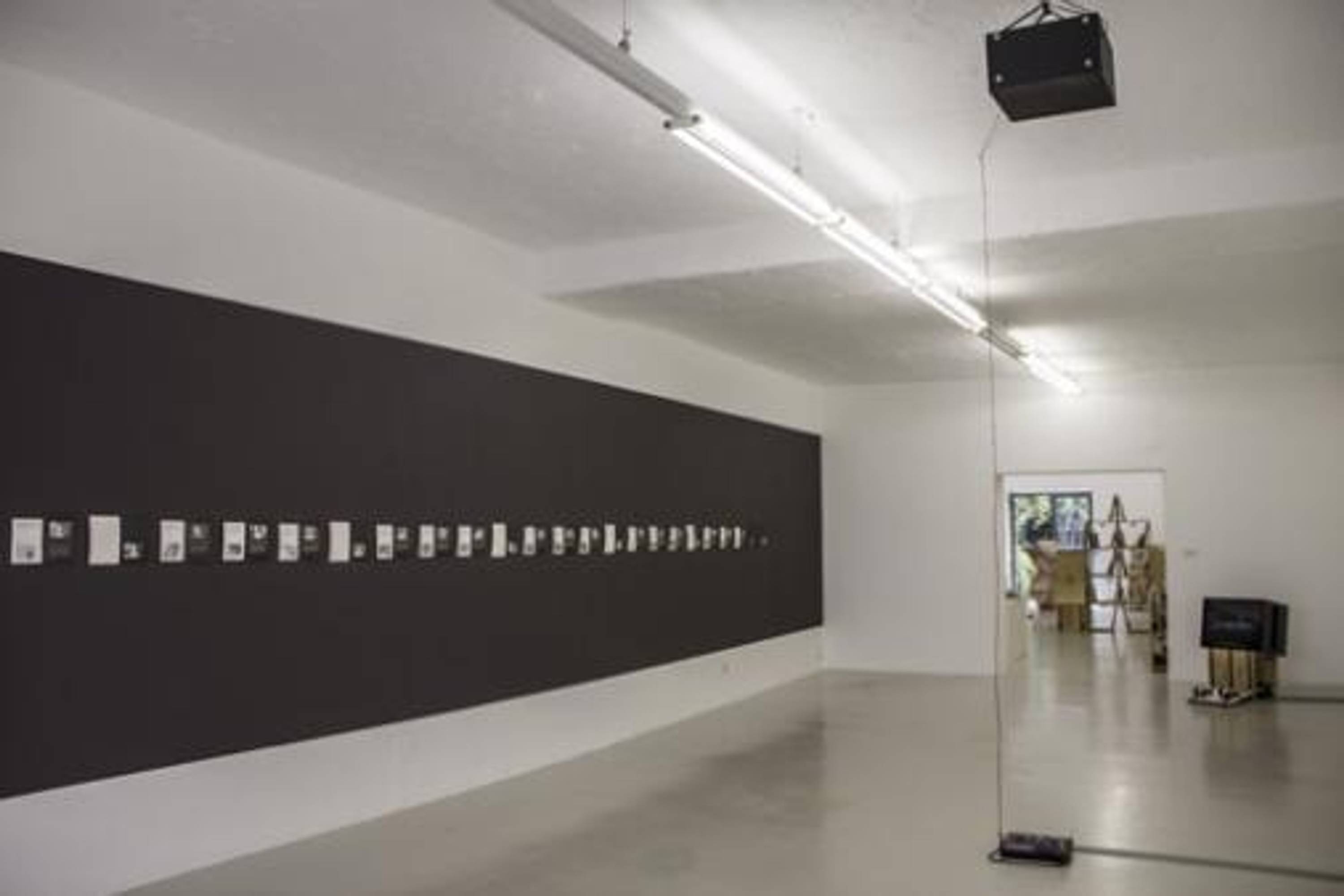PROLOGUE – PART ONE: REFERENCES, PAPERCLIPS AND THE CHA CHA CHA
Stephen Willats, Curandi Katz, Gareth Kennedy, Hope Tucker, Lorenzo Sandoval & S.T.I.F.F.
Curated by Emanuele Guidi
Prologue Prologue is the first exhibition project under the artistic direction of Emanuele Guidi at ar/ge kunst Galerie Museum. Prologue is a moment that anticipates and prepares the future activities of the Galerie Museum. Prologue is a beginning in two parts structured around the intention of moving along a line of continuity with the history of ar/ge kunst, and at the same time looking for a modality in which to continue its narrative. The titles Part One: References, Paperclips and the Cha Cha Cha and Part Two: La Mia Scuola di Architettura (my school of architecture) are composed of keywords, concepts or titles from the artworks exhibited. They outline the constellation of references, themes, artistic practices and narrative methodologies which will be at the core of forthcoming research at ar/ge kunst. These two parts respond to a specific need: that of progressively constructing a conceptual and installative framework to support exhibition projects and discursive programs that follow different strategies and temporalities.
Part One: References, Paperclips and the Cha Cha Cha Stephen Willats, Curandi Katz, Gareth Kennedy, Hope Tucker, Lorenzo Sandoval & S.T.I.F.F. In 1982 the artist Stephen Willats publishes the workbook Cha Cha Cha (Coracle/Lisson, London), which tells the story of the Cha Cha Club, one of the most famous venues in the London post-punk scene. The book is the result of a long collaborative process between Willats and the founders, Michael and Scarlett. Daytime photographs of locations and objects are contrasted to nocturnal portraits and excerpts of interviews with the club members, who describe how this kind of self-organized ‘capsule’ represented their opportunity to resist, reinvent or escape ‘normal’ society. In a Britain of Margaret Thatcher’s liberal-conservative politics and a London marked by strong social tensions and riots, Willats describes the decision to set up a club as an act in which “Money is definitely not the prime motive, much more important is providing a context for the group to become a community and for the manifestation of something very extreme through creative forms of self-identity, clothing, make-up, hairstyles, etc.” The Cha Cha Club in particular “captured the spirit of this new generation’s attitude perhaps more than any other, where everything was possible if your attitude was right.” The pages of the Cha Cha Cha workbook will be arranged in a site-specific display at ar/ge kunst alongside and in dialogue with the audio installation Inside the Night (1982), as a reflection on the notion of self-organized community that Willats developed during his career and on the possible forms of exchange, collaboration and representation that can be engendered with it. At the same time, Cha Cha Cha – which was published in conjunction with the more familiar work Are you Good Enough for the Cha Cha Cha? – comes to exemplify a practice that acknowledges artist’s books and editorial activities as parallel, autonomous modes of expression. From the ’sixties onwards, Willats defined the work of art as a “model of human relationships”, an “open-ended process” and a “learning system” which operates as “its own institution and as such is independent of art institutions.” For ar/ge kunst, as an institution of contemporary art, this definition provides a sound basis for self-reflexive confrontation and investigation. Lorenzo Sandoval & S.T.I.F.F, Hope Tucker, Curandi Katz and Gareth Kennedy expand and enrich this scenario with interventions and artworks specifically conceived or adapted for this first project. Mutant Matters (2013) is a collaboration between the artist and curator Lorenzo Sandoval and the German architects’ collective S.T.I.F.F. It is a versatile and flexible structure which takes a chair as its basic module and can be transformed into a bookcase, an archive, a wall, a series of seats, or, more generally, a support structure for other works. In its first iteration, Mutant Matters will be arranged as a shelf/bookcase which will allow the audience to access the ar/ge kunst archives for the first time through a thematic selection of publications. Later on, the structure will be turned into an integral part of the institution’s architecture and, in dialogue with Sandoval & S.T.I.F.F., will be reconfigured to accommodate various presentations and projects. In this context, the duo Curandi Katz (Valentina Curandi and Nathaniel Katz) presents a printed and bound version of twenty-eight translations of the book From Dictatorship to Democracy by Gene Sharp, all available for free download here (The Pacifist Library Action #5: Dispersal 2013). Over the last twenty years this American intellectual has been considered a key point of reference for dissidents all over the world (from Burma to the former Yugoslavia to Egypt) thanks to his research and publications on non-violent methods of resistance. Sharp has said that one of his own formative influences was the clandestine press produced and distributed by Norwegian school teachers during the Nazi occupation. It was this idea of subverting the role of an institution through the act of smuggling that led Curandi Katz to open a do-it-yourself editorial station at ar/ge kunst. The audience is invited to retrieve archival material from the shelves on the condition that they photocopy it (and subsequently bind it) directly onto the blank verso pages of the printouts of Sharp’s From Democracy to Dictatorship. The American filmmaker Hope Tucker also shares this interest in Gene Sharp’s work and tells another story of the Norwegian wartime resistance in the video Vi holder sammen (We hold together 2011). At the end of the nineteenth century, the Norwegian inventor Johan Vaaler patented a paperclip which, due to its non-competitive design, was never really produced on an industrial scale. But this paperclip was given a second lease of life when people in occupied Norway began to wear it as a covert symbol of unity and community that remained unintelligible to the occupying forces. Tucker develops a font from the paperclip itself and writes about the collective gesture that transformed the function and the meaning of an object that had become obsolete, thereby reincorporating it into the Norwegian imaginary. Finally, the Irish artist Gareth Kennedy has been invited to contribute in the form of a presentation and book launch on 24 September. The lecture will introduce his notion of Folk fiction and the invention of tradition, as well as being the first stage in a one-year project. Kennedy will be back in Bolzano throughout 2014 for a series of short research and development residencies during which he will produce a specially commissioned work. The project will be accessible to the public from the outset, not just in order to communicate and document its temporal scope, but also to provide occasion for encounter; a context for the sharing of sources, references and interests that might inform and feed into the research itself. With the kind support of: Provincia Autonoma di Bolzano, Alto Adige, Deutsche Kultur Fondazione Cassa di Risparmio, Alto Adige Città di Bolzano, Ufficio Cultura


